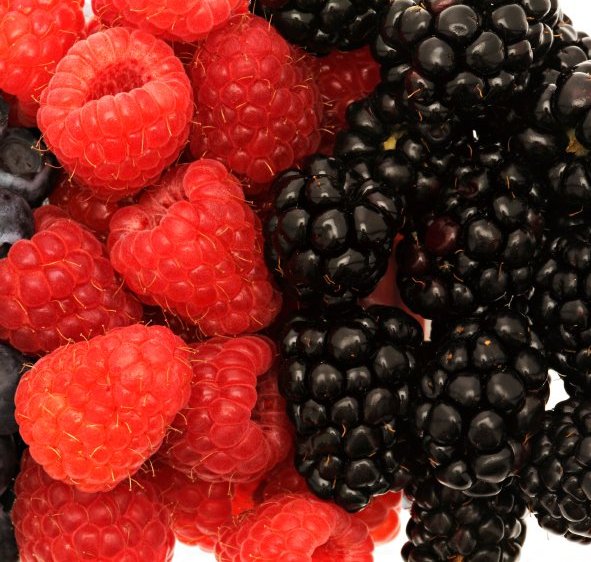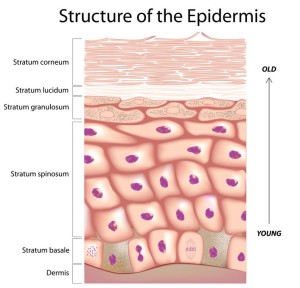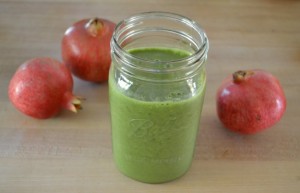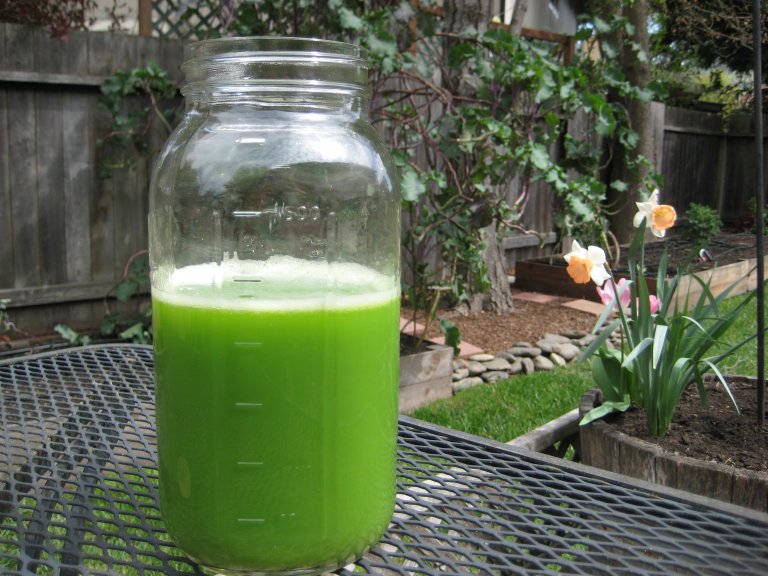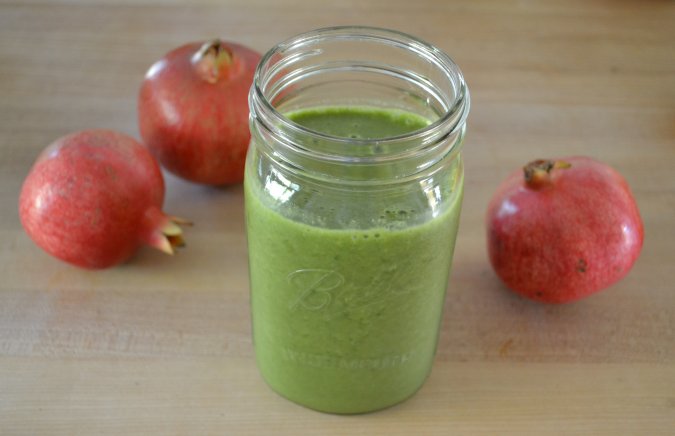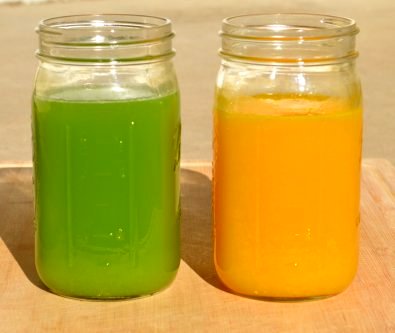There has been a lot of talk about the importance of probiotics for health in the media recently. As a result, there are now numerous products on the market that are supplemented with probiotics. It’s important to understand not only the health benefits of probiotics, but how to keep them alive once they are in the intestinal tract.
Probiotics need food to survive, and once in our intestinal tract, probiotics can stay alive on the foods we ingest. Just like people, probiotics thrive on specific types of foods, especially certain types of fiber. Fiber is not digestible by humans, but is fermentable by probiotics. Fiber that can provide food for probiotics is referred to as a prebiotic. Most types of fiber are composed of glucose molecules hooked together by chemical bonds; but the types of fiber that probiotics prefer as a source of food are composed of fructose molecules hooked together by chemical bonds. These types of fiber include fructooligosaccharides (FOS) and inulin.
Probiotics break down fructooligosaccharides and inulin into fructose and free fatty acids. The resulting fructose is then used as a food source by the probiotics and the free fatty acids serve as a food source for the cells that line our large intestine. In this way, among many others, probiotics help to provide food for us.
Raw Food Plant Based Diet Rich Source of Prebiotics
Inulin and fructooligosaccharides occur naturally in greater than 36,000 plant species in varying amounts. Some of the richest sources of inulin and FOS include banana, dandelion greens, garlic, artichoke, Jerusalem artichoke, onion, leek, yacon, shallot, and many more. There are numerous other commonly consumed raw foods that provide smaller amounts of these types of fiber, including lettuce, snap peas, snow peas, carrots, peaches, blackberries, watermelon, navel oranges, black grapes, raspberries, other fruits and vegetables, and some whole grains. Fruits and vegetables provide plenty of this and many other beneficial types of fiber, which is just one of a myriad of benefits derived by consuming large quantities of fruits and vegetables in one’s daily diet.
There is still much to learn about the health benefits and preferred foods of probiotics, and the media buzz on probiotics continues to grow. There have been articles in major newspapers including the New York Times on the possible connection between probiotics and maintaining a healthy weight, attributed to the ability of probiotics to use calories from our food for their own energy needs. This way, those extra calorie sources are consumed by probiotics rather than being absorbed by the body and stored as fat.
This is just the tip of the iceberg! We include much more information about the importance of probiotics and prebiotics in our Mastering of Raw Food Nutrition. We’d love for you to join us to learn more about this and many other fascinating topics on the science of plant based raw food nutrition.
References and Research:
Bosscher D(1), Breynaert A, Pieters L, Hermans N. Food-based strategies to modulate the composition of the intestinal microbiota and their associated health effects. J Physiol Pharmacol. 2009 Dec;60 Suppl 6:5-11.
de Vrese M(1), Schrezenmeir J. Probiotics, prebiotics, and synbiotics. Adv Biochem Eng Biotechnol. 2008;111:1-66.
Kechagia M(1), Basoulis D(2), Konstantopoulou S(1), Dimitriadi D(1), Gyftopoulou K(1), Skarmoutsou N(1), Fakiri EM(1). Health benefits of probiotics: a review. ISRN Nutr. 2013 Jan 2;2013:481651.
Kelly G. Inulin-type prebiotics--a review: part 1. Altern Med Rev. 2008 Dec;13(4):315-29.
Niness K. Inulin and oligofructose: what are they? J Nutr 1999; 129 (7 Suppl): 1402S – 1406S.
Quigley EM. Prebiotics and probiotics; modifying and mining the microbiota. Pharmacol Res. 2010 Mar;61(3):213-8.
Roberfroid M(1), Gibson GR, Hoyles L, McCartney AL, Rastall R, Rowland I, Wolvers D, Watzl B, Szajewska H, Stahl B, Guarner F, Respondek F, Whelan K, Coxam V, Davicco MJ, Léotoing L, Wittrant Y, Delzenne NM, Cani PD, Neyrinck AM, Meheust A. Prebiotic effects: metabolic and health benefits. Br J Nutr. 2010 Aug;104 Suppl 2:S1-63.
Slavin J. Fiber and prebiotics: mechanisms and health benefits. Nutrients. 2013;5:1417-1435.
Thomas LV(1), Ockhuizen T(2), Suzuki K(3). Exploring the influence of the gut microbiota and probiotics on health: a symposium report. Br J Nutr. 2014 Jul;112 Suppl 1:S1-S18.
One of the best ways to keep in touch with us is to join our email list. You’ll receive a free copy of Our Top 12 Strategies for Long Term Success on A Raw Plant-Based Diet eBook along with regular information about raw food and plant-based diets and periodic promotions for our classes, events, and other offerings!
The Calcium Content of Fruit
One of the best ways to keep in touch with us is to join our email list. You’ll receive a free copy of Our Top 12 Strategies for Long Term Success on A Raw Plant-Based Diet eBook along with regular information about raw food and plant-based diets and periodic promotions for our classes, events, and other offerings!
Is Lettuce a Superfood?
One of the best ways to keep in touch with us is to join our email list. You’ll receive a free copy of Our Top 12 Strategies for Long Term Success on A Raw Plant-Based Diet eBook along with regular information about raw food and plant-based diets and periodic promotions for our classes, events, and other offerings!
Video: What I Learned about Vitamin B12 from the Framingham Offspring Study
One of the best ways to keep in touch with us is to join our email list. You’ll receive a free copy of Our Top 12 Strategies for Long Term Success on A Raw Plant-Based Diet eBook along with regular information about raw food and plant-based diets and periodic promotions for our classes, events, and other offerings!
Video on the Selenium Content of Brazil Nuts
One of the best ways to keep in touch with us is to join our email list. You’ll receive a free copy of Our Top 12 Strategies for Long Term Success on A Raw Plant-Based Diet eBook along with regular information about raw food and plant-based diets and periodic promotions for our classes, events, and other offerings!
Three common vitamin D questions answered: Is vitamin D deficiency just for vegans, how is vitamin D made in our skin, and what is the best test for vitamin D?
 Is vitamin D deficiency just for vegans?
Is vitamin D deficiency just for vegans?
Many times I have heard people say that they stopped eating a plant-based vegan diet because they tested low in vitamin D. The fact is that vitamin D deficiency is not solely an issue for vegans, vegetarians, and raw foodists. A 2011 study estimated the prevalence of vitamin D deficiency in the US population at 42 percent on average and in some segments of the population this prevalence is as high as 82 percent. The researchers in this study defined vitamin D deficiency as a blood level of vitamin D less than or equal to 20 ng/ml. Opinions on this number differ. For example, various clinicians and the Vitamin D Council define vitamin D deficiency as less than or equal to 30 ng/ml, so these sources may see the estimated average vitamin D deficiency prevalence in the US as higher than 42%.
According to a Vegetarian Times survey, about 3% of the US population follows a vegetarian diet and approximately half of these people identify as vegan. As we can see from the stats mentioned above, vitamin D deficiency is clearly not just a concern for vegans, vegetarians, and raw food enthusiasts. Vitamin D status is an important consideration for everyone regardless of diet.
How is vitamin D made in our skin?
When we are outside and we have bare skin exposed to the sun, ultraviolet B spectrum rays interact with 7-dehydrocholesterol in our skin to produce cholecalciferol, also known as vitamin D3. After vitamin D3 is formed, it travels via the bloodstream down to the liver where it is converted to 25-hydroxycholecalciferol, also known as 25-hydroxyvitamin D3. 25-hydroxycholecalciferol then travels via the bloodstream down to the kidneys, where it is transformed to 1,25-dihydroxycholecalciferol, also known as 1,25-dihydroxyvitamin D3, which is considered to be the activated form of vitamin D.
Vitamin D3 is produced in an area of the skin called the epidermis. The epidermis has five layers, the first of which we can see, called the stratum corneum. Vitamin D3 is produced further down in levels 4 and 5 of the epidermis called the stratum spinosum and the stratum basale, after which vitamin D3 travels through the bloodstream to the liver for conversion.
Many people spend time in the sun but still find that they test low in vitamin D. There are some factors that can inhibit vitamin D production in the skin, specifically air pollution, skin type, time of day, age, sunscreen usage, latitude, time of year, and other factors. For example, air pollution in significant amounts can potentially obscure the rays of the sun, inhibiting skin production of vitamin D.
Sunscreen use at SPF 8 and above may affect the production of vitamin D in the skin as can latitude and season. For example, the ability of one’s skin to make vitamin D year round is consistent at 35 degrees north latitude and below in the northern hemisphere*, or 35 degrees south latitude and above in the southern hemisphere*. In the United States, 35 degrees north is Los Angeles on the west coast and the border of North and South Carolina on the east coast. The ability of one’s skin to make vitamin D in the winter will be reduced or eliminated for someone living above 35 degrees north and below 35 degrees south. Simply stated, people who live in northern parts of the United States have been found not to produce vitamin D in their skin during the winter months.
How do we determine our vitamin D status?
The best way to know is to get a blood test, and the test currently considered to be the best measurement of vitamin D status is known as the 25-hydroxycholecalciferol, 25-hydroxyvitamin D3, or 25-OH D3 test.
Would you like to learn how much vitamin D is made in the skin per unit time or are you interested in taking your general vitamin D and nutrition knowledge to the next level? We cover this topic and so much more in our online Mastering Raw Food Nutrition and Educator Course. Mastering Raw Food Nutrition is the updated and expanded version of our popular Science of Raw Food Nutrition classes. For more class details, click here.
Additionally, our book The Raw Food Nutrition Handbook: An Essential Guide to Understanding Raw Food Diets addresses many hot topics in raw food nutrition such as vitamin D, essential fats, protein, nutrient content of raw food diets, food combining, enzymes, hydration, vitamins, minerals, and many more. We value education on these important topics and are happy to finally bring this book to you. The book is available on Amazon and other online booksellers.
One of the best ways to keep in touch with us is to join our email list. You’ll receive a free copy of Our Top 12 Strategies for Long Term Success on A Raw Plant-Based Diet eBook along with regular information about raw food and plant-based diets and periodic promotions for our classes, events, and other offerings!
References:
Dina K, Dina R. The Raw Food Nutrition Handbook. Summertown, TN: Healthy Living Publications, 2015.
Forrest KY, Stuhldreher WL. Prevalence and correlates of vitamin D deficiency in US adults. Nutr Res. 2011 Jan;31(1):48-54.
http://www.vegetariantimes.com/article/vegetarianism-in-america/
www.vitamindcouncil.org
*Examples of areas in the northern hemisphere include North America, Europe, and Asia. Examples of areas primarily in the southern hemisphere include: South America, Australia, New Zealand, and islands of the South Pacific Ocean. Africa is located in both the northern and southern hemispheres.
Here is a video summarizing this information on how vitamin D is made in the skin:
Video for My Pomegranate Green Smoothie Recipe
Here is the recipe:
½ cup of fresh pressed pomegranate juice
1 cup fresh pressed Valencia orange juice
2 medium bananas, peels removed
3 cups chopped kale, loosely packed
1 cup chopped mangoes, peels removed
½ cup blueberries
½ cup blackberries
Here is a nutrient analysis of the ingredients in this smoothie:
| Adult Daily Values | ||
| Protein | 15 grams | |
| Calcium | 361 | 1000 – 1200 mg |
| Iron | 5.7 | 8 – 18 mg |
| Zinc | 2.2 | 8 – 11 mg |
| Magnesium | 203 | 310 – 420 mg |
| Potassium | 2876 | 4700 mg |
| Vitamin C | 462 | 75 – 90 mg |
| Vitamin E | 4.0 | 15 mg |
| Vitamin B1 | 0.7 | 1.1 – 1.2 mg |
| Vitamin B2 | 0.7 | 1.1 – 1.3 mg |
| Vitamin B3 | 6.6 | 14 – 16 mg |
| Vitamin B5 | 2.3 | 5 mg |
| Vitamin B6 | 1.9 | 1.3 – 1.7 mg |
| Folate | 258 | 400 mcg |
| Beta carotene | 19538 mcg |
This is one of my post-workout green smoothies. On days that I do not have a big workout, my smoothies are usually smaller.
One of the best ways to keep in touch with us is to join our email list. You’ll receive a free copy of Our Top 12 Strategies for Long Term Success on A Raw Plant-Based Diet eBook along with regular information about raw food and plant-based diets and periodic promotions for our classes, events, and other offerings!
Video on Jerusalem artichokes: nutrient content, gardening experience, and an easy recipe
One of the best ways to keep in touch with us is to join our email list. You’ll receive a free copy of Our Top 12 Strategies for Long Term Success on A Raw Plant-Based Diet eBook along with regular information about raw food and plant-based diets and periodic promotions for our classes, events, and other offerings!
Video for My Simple Green Juice Recipe
I have shared this recipe on my blog in the past and now I have a short video explaining how I make this juice:
This juice has been one of my favorites for years because of its simplicity, nutrient content, and versatility. I find it to be a great introductory juice recipe for people new to juicing, since it has a lighter taste than green juice that contains darker leafy greens. I personally love the taste of dark leafy greens, but for some, the taste may need some “getting used to”. I can certainly appreciate this, given that when I became interested in health years ago, I did not even know that dandelion greens were edible. Now, they are one of my favorite leafy greens!
Here is the recipe:
5 stalks of celery (12” long)
1 lemon, peeled
2 medium cucumber, 8” long
This recipe makes about 32 ounces of juice. Here are some of the nutrients found in these ingredients:
| Light Green Juice ingredients | Adult Daily Values | |
| Calories | 165.9 | |
| Calcium | 246.2 | 1000 – 1200 mg |
| Iron | 2.83 | 8 – 18 mg |
| Zinc | 1.67 | 8 – 11 mg |
| Magnesium | 120.2 | 310 – 420 mg |
| Potassium | 1832.9 | 4700 mg |
The mineral content of such simple ingredients is amazing to me, especially calcium and iron. The sodium content of these ingredients is 270 mg, most of which is found in the celery. Cheers!
One of the best ways to keep in touch with us is to join our email list. You’ll receive a free copy of Our Top 12 Strategies for Long Term Success on A Raw Plant-Based Diet eBook along with regular information about raw food and plant-based diets and periodic promotions for our classes, events, and other offerings!
My Top 5 Favorite Leafy Greens
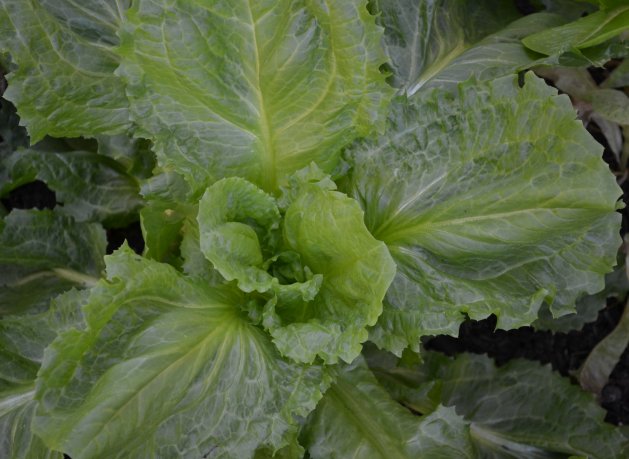
1. Lettuce
From the beginning of my raw food journey in 1990, lettuce has been one of my go-to leafy greens. I love the mild taste and versatility of lettuce, which often forms the basis for my salad recipes. Before my interest in raw food developed, I knew of one type of lettuce: iceberg. This changed quickly as I learned of the many varied types of lettuce including grocery store mainstays such as Romaine, green leaf, red leaf, and Boston. When I started shopping at farmers markets and growing my own food several years ago, I became familiar with lesser known and heirloom varieties of lettuce that expanded my lettuce repertoire further. Right now, Rick and I have 8 varieties of lettuce growing in our backyard garden. Lettuce is a member of the sunflower plant family.
2. Dandelion Greens
Dandelion greens are popularly consumed as an early spring green, but I personally love dandelion greens year round, and enjoy them in my salads, smoothies, and juices. The mineral content of dandelion greens is notable and rivals kale in calcium content. Dandelion greens are in the sunflower plant family (Asteraceae), along with lettuce, endive, escarole, frisée greens, sunflower seeds, and Jerusalem artichokes.
3. Tree Collard Greens
Rick and I planted several collard plants in our garden when moved into our house a few years ago, and they are still going strong and producing beautiful large deep green leaves, year round in northern California. What we love about our tree collards is that they are relatively low maintenance and are a reliable source of greens for us. We enjoy greens from our tree collard plants mostly in smoothies, but occasionally put them in juice or a salad. These tree collard greens are tender and easily digestible for us in comparison to collard greens we find in the grocery store that generally have a tougher consistency. Our tree collards are now about 12 feet tall and still growing, with numerous leaves that can measure up to 8 inches in diameter or more. Collard greens, like other members of the cabbage family (Brassicaceae) contain noteworthy amounts of certain minerals.
4. Kale
Kale is most certainly one of our many favorite leafy greens and a backyard garden staple. I first became interested in kale when I discovered its impressive calcium and iron content, which is not surprising, given that kale is a member of the cabbage family. Members of the cabbage plant family are also called “cruciferous”, in reference to the cross-like appearance of their flowers, or “brassica” vegetables, reflecting their plant family name Brassicaceae. Rick and I enjoy kale in smoothies, juices, soups, and many other recipes. Since we like to have a variety of foods in our diet, we rotate our leafy greens to enjoy the diversity of flavors, textures, and nutrients offered by different leafy greens. For example, we might have kale as our main leafy green on one day, dandelion greens the next, frisée greens the next, and so forth.
5. Escarole
Rick and I recently returned home from traveling, visiting, and teaching on the east coast to find that the tiny escarole starts we planted in September had grown into huge plants, with 9-inch diameter leaves, at the largest. Given the size of the leaves, this escarole would make great wraps. We have found that escarole grows well in cooler weather, so the size of our plants is not a surprise, given that it is mid-November.
Escarole is in the sunflower plant family, so its strong resemblance to some lettuce varieties is justified. I have found that the taste of escarole can vary, for example, the escarole growing in our yard has a more mild taste than the more bitter versions I have found in grocery stores and farmers markets.
Here are some of the nutrient highlights of escarole:
| 3 cups chopped escarole (150 g) | Adult Daily Values | |
| Calories | 25.5 | |
| Calcium | 78 mg | 1000 – 1200 mg |
| Iron | 1.24 mg | 8 – 18 mg |
| Zinc | 1.18 mg | 8 – 11 mg |
One of the best ways to keep in touch with us is to join our email list. You’ll receive a free copy of Our Top 12 Strategies for Long Term Success on A Raw Plant-Based Diet eBook along with regular information about raw food and plant-based diets and periodic promotions for our classes, events, and other offerings!
Video Series of How We Constructed a Raised Bed Garden: Parts 5 and 6 and Harvest Time!
Here are our most recent videos documenting our raised bed garden project. Since we live in northern California, we have dry summers and need to have an irrigation system to water our plants, which is especially handy when we are out of town teaching. This video shows the installation of the irrigation timer:
We have been harvesting the lettuce from our raised bed for a couple of weeks now – it is incredibly fresh and flavorful and has grown surprisingly quickly. Here is a video progress report:
Our raised bed is almost complete. The remaining aspect of this project is designing and finalizing the area around the bed to blend its appearance with the rest of our backyard. We will post a video when this final aspect of the project is finished. Have a great week!
One of the best ways to keep in touch with us is to join our email list. You’ll receive a free copy of Our Top 12 Strategies for Long Term Success on A Raw Plant-Based Diet eBook along with regular information about raw food and plant-based diets and periodic promotions for our classes, events, and other offerings!
Why We Love Our Local Farmers Markets
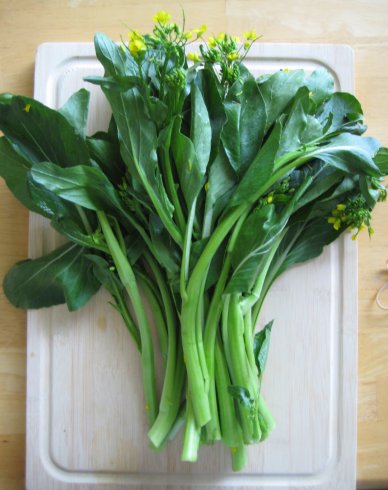
One of the many questions that Rick and I are asked about raw food is where to find it at reasonable prices. In my last blog post, I wrote about wholesale produce markets, which can really help one save money when produce is purchased in quantity, providing that one has access to a wholesale produce market. What about areas where one does not have access to such a place? One alternative is a local farmers market.
We love farmers markets. They are a great place find locally grown produce and to interact with the farmers directly, if they are present to sell their produce personally – and many of them do so. Numerous times I have asked the farmers about their food producing techniques, an opportunity that I find to be very valuable. For me, this is a great way to have knowledge of how our food is produced and how it is handled. I have also found the food to be exceptionally fresh! An average head of lettuce purchased at our local farmers market lasts about 2 weeks before showing signs of withering. Produce that I buy at our local farmers market is often picked the same day that I buy it – how much more fresh can one get! Given that our diets are based on fresh produce, Rick and I buy in large quantities, and many of the farmers often give us a price break on the food we buy. Several of the farmers from whom we buy know us by name and actually anticipate our arrival at the market, by putting aside the usual foods that we buy from them. Talk about personal service – we really enjoy having a personal connection with the people from whom we buy food!
Since we live in northern California, our local farmers markets are open year round. In other areas, we have noticed that farmers markets depend on the local growing season and produce availability. Similarly, the variety of produce at our local farmers market depends on the type of food being grown locally at the time. For example, winter is a great time to find oranges, fall and early winter is the best time to find locally grown almonds, and of course summer is the most abundant season of all! Here, Rick and I can get lettuce and other green leafy vegetables at our farmers market year round, along with a variety of other fruits and vegetables. Such availability makes eating a produce-based diet much simpler.
It is wonderful to see that farmers markets appear to have gained popularity in the last 5+ years, especially in areas that did not have such markets several years ago. It is great to see that the trend of eating more locally grown food and supporting local farmers directly is continuing to grow. I hope that one day this is no longer a trend, but a mainstay in our communities.
One of the best ways to keep in touch with us is to join our email list. You’ll receive a free copy of Our Top 12 Strategies for Long Term Success on A Raw Plant-Based Diet eBook along with regular information about raw food and plant-based diets and periodic promotions for our classes, events, and other offerings!
Saving money with wholesale produce
Our new YouTube channel is LIVE! After so many requests, we finally have a YouTube channel where we will be posting videos on a variety of health related topics! We have a couple of videos posted there now, including Rick’s three part essential fat video, and a video about our visit to the NY wholesale produce market:
Rick and I have visited wholesale markets in both the San Francisco bay area and the New York metro area. We live in the SF bay area, so when we buy from our local wholesale produce markets we buy enough food to last us about 3 weeks. Why so much? The food available at wholesale markets is sold in boxes or cases. This works well for us because the produce is so fresh, that it lasts for often weeks at a time in our large-capacity dedicated refrigerator.
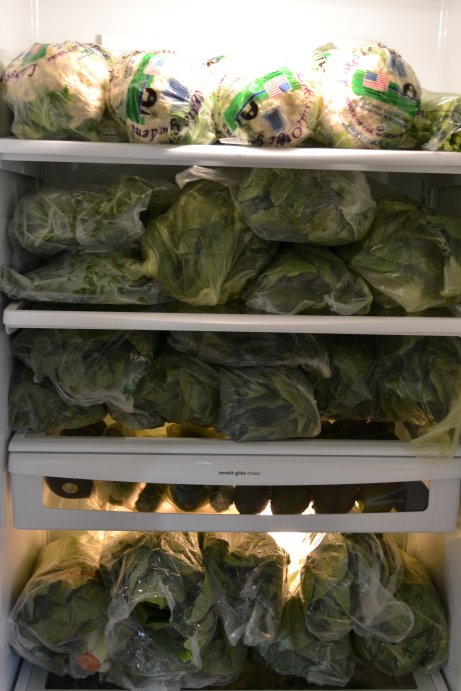
We have found that when we buy lettuce at wholesale, the heads are very large, since very few, if any of the outer leaves have been removed. These heads of lettuce are generally larger than the heads we see at the grocery store, which likely have had leaves removed to maintain a fresh look. I really enjoy going to wholesale markets because of the wide variety of food available, especially organic. A very large percentage of the food that we eat is organically grown here in California.
For produce enthusiasts like us, wholesale markets can be a great way to purchase in quantity and save a notable amount of money. Rick has calculated that on average, we spend about 50% less money on produce from the wholesale markets that we would spend on the same amount of produce at the grocery store. You may be wondering if we go to farmers markets and the answer is yes, we love our local farmers market! We can often find foods at the farmers market that are not available at the wholesale market and vice versa.
The wholesale markets we have attended open around midnight or later and close around 10 am or earlier, depending on the vendor, so Rick and I find ourselves waking at 5 am to beat rush hour to the markets. I especially love these markets, since our need to go shopping for food weekly is drastically reduced. I find myself only having to do some minor fill-in shopping for items not available at the wholesale markets, maybe once a week or twice a month. With this shopping strategy, Rick and I overall spend much less time shopping and have more time available for work and other activities we enjoy.
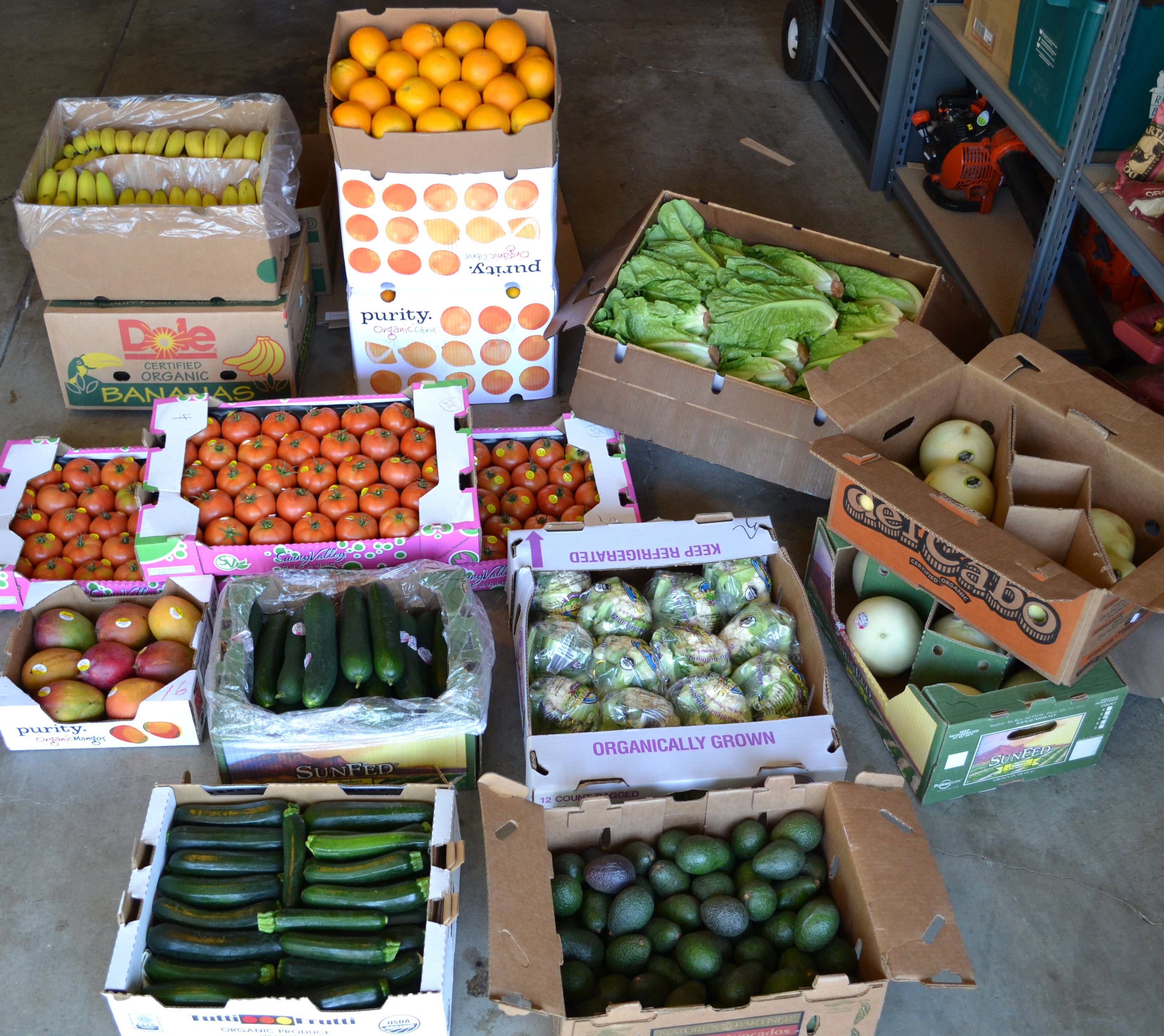 The challenge is that our local wholesale markets are in San Francisco and South San Francisco which are about an hour and fifteen minutes away from our home if there is little traffic. The wholesale produce market that we have visited in the New York area is in the Bronx, which is also about an hour and fifteen minutes from our parents’ homes, where we stay on our visits to the New York metro area. This market has similar hours to our bay area wholesale markets, but is much larger.
The challenge is that our local wholesale markets are in San Francisco and South San Francisco which are about an hour and fifteen minutes away from our home if there is little traffic. The wholesale produce market that we have visited in the New York area is in the Bronx, which is also about an hour and fifteen minutes from our parents’ homes, where we stay on our visits to the New York metro area. This market has similar hours to our bay area wholesale markets, but is much larger.
Without a doubt, wholesale markets are certainly an experience and a great way to buy fresh produce in quantity. They can also be a tremendous resource for people who live in areas that have limited access to fresh produce year round, providing that the person lives within driving distance of a wholesale market. Many major metro areas have wholesale markets, and our experience at the two we have visited is that most vendors sell to individuals, although some sell exclusively businesses. You will have to check with individual vendors to learn their sales policies.
One of the best ways to keep in touch with us is to join our email list. You’ll receive a free copy of Our Top 12 Strategies for Long Term Success on A Raw Plant-Based Diet eBook along with regular information about raw food and plant-based diets and periodic promotions for our classes, events, and other offerings!
Nutrient Analysis of Kale
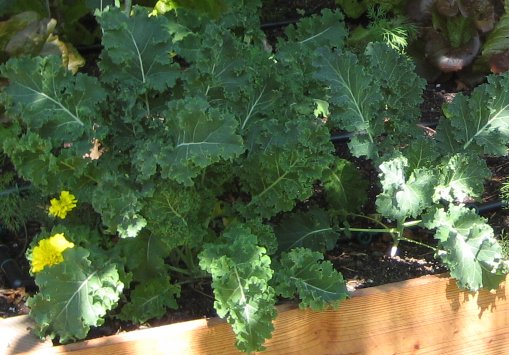
Kale is most certainly one of our many favorite leafy greens. When I first started enjoying the raw food approach to eating, I was not all that familiar with kale as a leafy green choice. At that time, I had only tried kale on handful of occasions and was not impressed with its (ahem) perceived bitter flavor 🙂
However, as I began my nutrition education, I found kale to be a fascinating leafy green that is packed with positive nutritional qualities:
| Nutrient | Kale (3 cups chopped, raw) | Adult Daily Values |
| Calories | 101 | |
| Protein | 6.6 | |
| Thiamin (Vitamin B1) | 0.22 | 1.1 – 1.2 mg |
| Riboflavin (Vitamin B2) | 0.26 | 1.1 – 1.3 mg |
| Niacin (Vitamin B3) | 2.01 | 14 – 16 mg |
| Pyridoxine (Vitamin B6) | 0.54 | 1.3-1.7 mg |
| Calcium | 271.4 | 1000 – 1200 mg |
| Iron | 3.42 | 8 – 18 mg |
| Magnesium | 68.3 | 310 – 420 mg |
| Potassium | 898.5 | 4700 mg |
| Zinc | 0.88 | 8 – 11 mg |
I found the vitamins B1, B2, B6, calcium, iron, magnesium, and potassium content of kale to be impressive. Nowadays, Rick and I enjoy kale in smoothies, juices, soups, and many other recipes. Since we like to have a variety of foods in our diet, we rotate our leafy greens to enjoy the diversity of flavors, textures, and nutrients offered by different leafy greens. For example, we might have kale as our main leafy green on one day, dandelion greens the next, frisée greens the next, and so forth.
On a side note, the kale that we grow in our garden is generally more tender and easier for us to digest than the kale we find in supermarkets. When the kale that we purchase has a “tougher” consistency we tend to blend it in a smoothie or even sometimes lightly steam it. We find that more tender kale from our garden is easily consumed raw in salads or other recipes.
There are so many leafy greens from which to choose when designing one’s diet. Do you have favorite leafy green?
One of the best ways to keep in touch with us is to join our email list. You’ll receive a free copy of Our Top 12 Strategies for Long Term Success on A Raw Plant-Based Diet eBook along with regular information about raw food and plant-based diets and periodic promotions for our classes, events, and other offerings!
Pomegranate Green Smoothie
One of the many things we love about this time of year is pomegranates and while visiting some friends this weekend, we enjoyed ripe, backyard-grown pomegranates. I do not believe that I have ever seen pomegranates this red and ripe – so ripe that the outer skins were splitting to reveal deep red colored arils in the inside. Pomegranate arils are delicate, red fluid-filled pouches that surround individual pomegranate seeds. The juice we made with these pomegranates had a rich and smooth flavor with no trace of bitterness at all. We used some of the juice to create some recipes including this green smoothie:
½ cup of fresh pressed pomegranate juice
Juice of three medium Valencia oranges
3 medium bananas
3 cups chopped collard greens
Here is a nutrient analysis of the ingredients in this smoothie:
| Adult Daily Values | ||
| Calories | 597 | |
| Calcium | 328 | 1000 – 1200 mg |
| Iron | 1.71 | 8 – 18 mg |
| Zinc | 1.20 | 8 – 11 mg |
| Magnesium | 152.0 | 310 – 420 mg |
| Potassium | 2304.9 | 4700 mg |
| Vitamin C | 253.9 | 75 – 90 mg |
| Vitamin E | 3.32 | 15 mg |
| Vitamin B1 | 0.54 | 1.1 – 1.2 mg |
| Vitamin B2 | 0.59 | 1.1 – 1.3 mg |
| Vitamin B3 | 4.40 | 14 – 16 mg |
| Vitamin B5 | 2.71 | 5 mg |
| Vitamin B6 | 1.77 | 1.3 – 1.7 mg |
| Folate | 424.7 | 400 mcg |
| Beta carotene | 4241.4 | |
| Protein | 11.7 |
I found the calcium, potassium, magnesium, vitamin C, vitamins B1, B2, B3, B5, and B6, folate, beta carotene, and protein content of this smoothie to be impressive! Especially for almost 600 calories (kcal), which is a little more than one quarter of my calorie intake for a day when I am exercising. FYI, I am not one to count calories, but I find that I naturally consume more calories on days when I exercise than not. Since this is a high fruit smoothie, I really appreciate it pre- or post-workout. For example, late last week, I had this smoothie a couple of hours before running, and found that I had a tremendous amount of energy during my run, so much that I actually ran a couple of extra miles longer than my original plan. I felt great the next morning with almost non-existent muscle soreness, despite my longer than usual run.
For those who do not prefer such a high fruit smoothie, there are a variety of substitutions that one can make for the bananas and OJ. If you have any suggestions, we would love to hear from you. We wish you an enjoyable thanksgiving or thanksliving 🙂
One of the best ways to keep in touch with us is to join our email list. You’ll receive a free copy of Our Top 12 Strategies for Long Term Success on A Raw Plant-Based Diet eBook along with regular information about raw food and plant-based diets and periodic promotions for our classes, events, and other offerings!
Persimmon Season Is Upon Us

One of my favorite things about the month of November is visiting local farmers markets to find a beautiful, sweet, orange-colored fruit called the persimmon. Truth be told, I was not aware of the existence of the persimmon until I moved to the left coast in the late 90s. I quickly learned that there are several different types of persimmons, one of which needs to be soft and almost to the point of liquefying to be consumed without having a mouth-puckering astringent taste (I learned this the hard way), namely the Hachiya persimmon. For me, patience is definitely key to the successful consumption of this type of persimmon, which involves patiently waiting for full ripeness.
Two other types of persimmons that I have enjoyed are Fuyu and Amagaki, both of which I eat while they are still hard, with very little to no astringency, depending on the degree of ripeness. These three types of persimmons grow here in northern California and are relatively easy to find in local stores and farmers markets during the months of November and December.
Of course, since I love to know the nutrient content of foods, I did a nutrient analysis of persimmons. The type of persimmon used to determine this information was not specified:
| Persimmon, 3 fruits (75 g) | Adult Daily Values | |
| Calories | 95 | |
| Calcium | 20.3 | 1000 – 1200 mg |
| Iron | 1.87 | 8 – 18 mg |
| Potassium | 232.5 | 4700 mg |
| Vitamin C | 49.5 | 70 – 90 mg |
| Protein | 0.6 g |
I was a little disappointed to find that many of the nutrients of interest to me were not reported, such as the B vitamins, zinc, and magnesium. However, I was surprised to see the notable iron, vitamin C, and potassium content of persimmons. For a fruit, I find this to be worthy of consideration.
One of the best ways to keep in touch with us is to join our email list. You’ll receive a free copy of Our Top 12 Strategies for Long Term Success on A Raw Plant-Based Diet eBook along with regular information about raw food and plant-based diets and periodic promotions for our classes, events, and other offerings!
Nutrient Analysis of Jackfruit
Last week, a friend dropped by with a rare treat for Rick and me: jackfruit. What is jackfruit? It is a large tropical fruit that has a taste somewhere between bananas and pineapple. I love, love, love the flavor of jackfruit! Our jackfruit pictured below is 15 inches long and 8 inches wide:
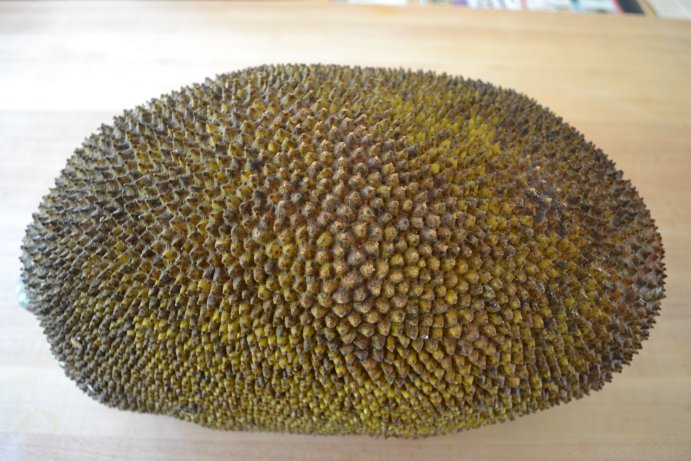
Here is a photo of our jackfruit cut in half, revealing the edible yellow sections that surround the seeds:
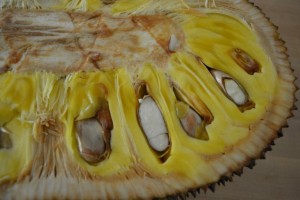
To eat this jackfruit, I removed the yellow sections from the surrounding husk, removed the seeds from the yellow sections, and enjoyed eating the yellow sections. Here is a photo of the yellow sections with the seeds removed:
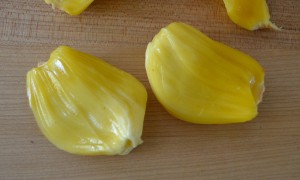
Of course, I just had to research the nutrient content of jackfruit, and found this information on my nutrient analysis program:
| Jackfruit – one cup of edible sections | Adult Daily Values | |
| Calories | 155 | |
| Calcium | 56.1 | 1000 – 1200 mg |
| Iron | 0.99 | 8 – 18 mg |
| Zinc | 0.69 | 8 – 11 mg |
| Magnesium | 61.1 | 310 – 420 mg |
| Potassium | 500.0 | 4700 mg |
| Protein | 2.43 g |
Per calorie, I found jackfruit to be a surprising source of calcium, iron, and potassium for a fruit. I love good news about foods that I enjoy. ♥
One of the best ways to keep in touch with us is to join our email list. You’ll receive a free copy of Our Top 12 Strategies for Long Term Success on A Raw Plant-Based Diet eBook along with regular information about raw food and plant-based diets and periodic promotions for our classes, events, and other offerings!
Cup of Sun, Anyone?
Wow, what a busy summer it has been for us. We spent a good part of the summer traveling and teaching and now we are getting ready to head out on the road again for our fall Science of Raw Food Nutrition I tour. Next weekend (September 29th and 30th, 2012), we will be teaching in Portland and the Seattle area and in October we will be teaching in Connecticut and Washington, D.C. This coming Wednesday, September 26th, 2012, we will be doing an evening talk at the Chaco Canyon Café in Seattle. More information on our fall tour, please click here. We hope to meet you at a future event!
Now on to our blog post: One of the highlights of our summer was the Woodstock Fruit Festival. This event was incredibly enjoyable with great food, fun activities, and a warm community of people. I was amazed with the amount of fruit available for the participants, as well as a variety of fruits that I rarely see in stores, such as longan and lychee. Of course, the festival provided plenty of common fruits such as watermelon, apples, and oranges. In fact, on many of the mornings I found numerous people making fresh squeezed orange juice, which was not unusual, except for the amount that some people were making: 32 ounces, 48 ounces, etc…
In the 22+ years that I have been eating a mostly raw, plant based diet, I have not consumed this much orange juice in one sitting, however it is not unusual for me to make 32 – 48+ ounces of green juice at once. I thought it would be fun to do a nutrient comparison between the ingredients used to make 32 ounces of fresh squeezed orange juice and the ingredients in 32 ounces of a favorite green juice recipe of mine.
Here are the ingredients in my juice recipe:
5 stalks of celery (12” long)
1 lemon, peeled
2.5 medium cucumber, 8” long
1 cup dandelion greens, loosely packed
This recipe made a little more than 32 ounces of green juice. Please note that there is definitely some variation in the amount of juice that one can make from whole foods due to variability in natural products. Here are some of the nutrients found in these ingredients:
| Green juice ingredients | Adult Daily Values | |
| Calories | 213 | |
| Calcium | 373.1 | 1000 – 1200 mg |
| Iron | 4.96 | 8 – 18 mg |
| Zinc | 2.20 | 8 – 11 mg |
| Magnesium | 159.5 | 310 – 420 mg |
| Potassium | 2272.4 | 4700 mg |
| Vitamin C | 94.8 | 75 – 90 mg |
| Folate | 192 | 400 mcg |
| Beta carotene | 4424.8 mcg | |
| Protein | 9.51 g |
This is a very strong nutrient profile, particularly notable is the calcium, iron, zinc, potassium, and protein content of these ingredients.
Here are the ingredients for the freshly squeezed orange juice:
8 medium Valencia oranges, cut in half and juiced with a manual citrus press.
This recipe made a little less than 32 ounces of orange juice. Once again, natural variation in ingredients may yield different amounts of juice. I got as close as possible to 32 ounces by using whole ingredients for ease of replication.
Here are some of the nutrients found in these 8 oranges:
| 8 medium Valencia oranges | Adult Daily Values | |
| Calories | 474 | |
| Calcium | 387.2 | 1000 – 1200 mg |
| Iron | 0.87 | 8 – 18 mg |
| Zinc | 0.58 | 8 – 11 mg |
| Magnesium | 96.8 | 310 – 420 mg |
| Potassium | 1732.7 | 4700 mg |
| Vitamin C | 469.5 | 75 – 90 mg |
| Folate | 377.5 | 400 mcg |
| Beta carotene | Not reported | |
| Protein | 10.1 g |
I have heard many people over the years talking about fruit being low in minerals. In all of the research I have done on the nutrient content of foods, I have seen numerous exceptions to this notion. Oranges are a great example. As one can see, per serving oranges contain more calcium, vitamin C, folate, and protein than the green juice ingredients. The green juice ingredients are superior in iron, zinc, magnesium, and potassium content. Imagine that - more protein in oranges than greens??? Hmmm……
It is important to note that this comparison is per serving, if I were to make this an isocaloric comparison, which is a comparison where both samples have an equal number of calories, the green juice would be superior in most nutrients. It is important to consider how much juice one is willing to consume, which is why I did this comparison with equal volumes. Per calorie, green juice ingredients are richer in most nutrients, whereas per serving the green juice and orange juice ingredients are each superior in certain nutrients.
Let us look at an isocaloric comparison between oranges and the green juice ingredients. To get close to 474 calories, we will have to add more ingredients to our green juice formula:
8 stalks of celery (12” long)
2 lemons, peeled
6 medium cucumber, 8” long
3 cup dandelion greens, loosely packed
This recipe (version 2) contains more than double the ingredients as the previously discussed green juice recipe. This is a great example of the fact that greens contain fewer calories, by volume, relative to fruit. Fruits are in general more calorie rich than greens. Simply stated, one would have to eat a much greater volume of greens to get the same number of calories as the original volume of fruit.
Here are some of the nutrients found in the ingredients of version 2 of our green juice recipe:
| Green juice version 2 ingredients | Adult Daily Values | |
| Calories | 476 | |
| Calcium | 846 | 1000 – 1200 mg |
| Iron | 12.2 | 8 – 18 mg |
| Zinc | 5.05 | 8 – 11 mg |
| Magnesium | 363.9 | 310 – 420 mg |
| Potassium | 4872.9 | 4700 mg |
| Vitamin C | 213.2 | 75 – 90 mg |
| Folate | 374 | 400 mcg |
| Beta carotene | 11859.4 mcg | |
| Protein | 21.6 g |
It is important to note that the nutrients reported in these nutrient analyses are based on the ingredients used to make these juices. Information on the actual nutrient content of fresh vegetable and fruit juices is very limited at this time, and I look forward to research being more complete in this area in the future.
Overall, I was AMAZED with the nutrient content of oranges, since they contained greater amounts of important nutrients than I had anticipated. Not surprisingly, an almost isocaloric comparison of 474 calories of oranges and 476 calories of green juice ingredients showed that the green juice ingredients were superior in all nutrients reported with the exception of vitamin C and folate, which were higher in the oranges.
The green juice ingredients were more nutrient dense than the oranges and the oranges were more calorie dense than the green juice ingredients. Each of these foods has their nutritional strengths and weaknesses, which is good information to know when making food choices.
Additionally, these juices were so beautiful and literally glowed when Rick and I placed them in the sun for photographing. There is something to be said for the appearance of foods and their appeal – needless to say these juices did not last long in our house. Cheers!
One of the best ways to keep in touch with us is to join our email list. You’ll receive a free copy of Our Top 12 Strategies for Long Term Success on A Raw Plant-Based Diet eBook along with regular information about raw food and plant-based diets and periodic promotions for our classes, events, and other offerings!
Science of Raw Food Nutrition I on the Road Fall 2012 Tour
 Whew! Rick and I returned home earlier this week from an amazing time at the Woodstock Fruit Festival to find our raised beds full of ripe heirloom tomatoes! Now, we are teaching our Science of Raw Food Nutrition series of classes here in northern California, after which we will head out on our Science of Raw Food Nutrition I fall tour of the Pacific Northwest and northeastern U.S. We certainly have a busy fall of teaching ahead of us and we hope that you can join us for a class if we are visiting your area.
Whew! Rick and I returned home earlier this week from an amazing time at the Woodstock Fruit Festival to find our raised beds full of ripe heirloom tomatoes! Now, we are teaching our Science of Raw Food Nutrition series of classes here in northern California, after which we will head out on our Science of Raw Food Nutrition I fall tour of the Pacific Northwest and northeastern U.S. We certainly have a busy fall of teaching ahead of us and we hope that you can join us for a class if we are visiting your area.
Our Science of Raw Food Nutrition I “on the road” class is the same class that we teach in northern California in a slightly different format. It is a 12-hour course covering hot topics including plant sources of iron, calcium, protein, vitamin B12, essential fatty acids, blood sugar, pH balance, food changes from cooking, anti-inflammatory nutrition, weight management, anti-aging and longevity, and much more! Science of Raw Food Nutrition I “on the road” is composed of 8 hours of in-class instruction and 4 hours online. For those of you who have wanted to take this class but could not find the time to come to California, here is your opportunity to see us closer to home! We are very happy to bring this class to you!
Here is a list of our upcoming Science of Raw Food Nutrition I on the road dates for September and October:
September 29, 2012 – Portland, OR at the People’s Food Co-op
September 30, 2012 – Kenmore, WA at Bastyr University
October 21, 2012 – Fairfield, CT at Catch a Healthy Habit Café
October 27, 2012 – Washington, DC at Physicians Committee for Responsible Medicine
One of the best ways to keep in touch with us is to join our email list. You’ll receive a free copy of Our Top 12 Strategies for Long Term Success on A Raw Plant-Based Diet eBook along with regular information about raw food and plant-based diets and periodic promotions for our classes, events, and other offerings!
Nutrient Analysis of Durian
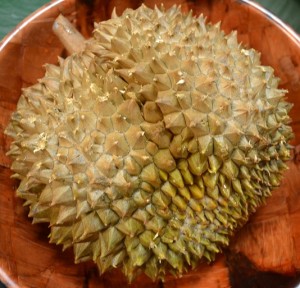 Durian, what’s that? It is a fascinating fruit that grows in southeast Asia and other tropical areas that has painful spines on its skin (ouch!) and tastes like…..onion pudding (huh?). I have also heard people characterize the taste as garlic custard, vanilla almond pudding, etc. The smell is, well, one of the most unusual smells that I have ever experienced from a fruit. Rick is so repelled by the smell that he has asked me to keep durian on our back porch and not in the house.
Durian, what’s that? It is a fascinating fruit that grows in southeast Asia and other tropical areas that has painful spines on its skin (ouch!) and tastes like…..onion pudding (huh?). I have also heard people characterize the taste as garlic custard, vanilla almond pudding, etc. The smell is, well, one of the most unusual smells that I have ever experienced from a fruit. Rick is so repelled by the smell that he has asked me to keep durian on our back porch and not in the house.
It is very rare that I eat durian. In fact, I have not had durian since Rick and I presented at a retreat in Hawaii in 2005. I consider durian to be a fun treat whenever I have it and actually enjoy the unusual taste. Here at the Woodstock Fruit Festival, there is lots of durian :):
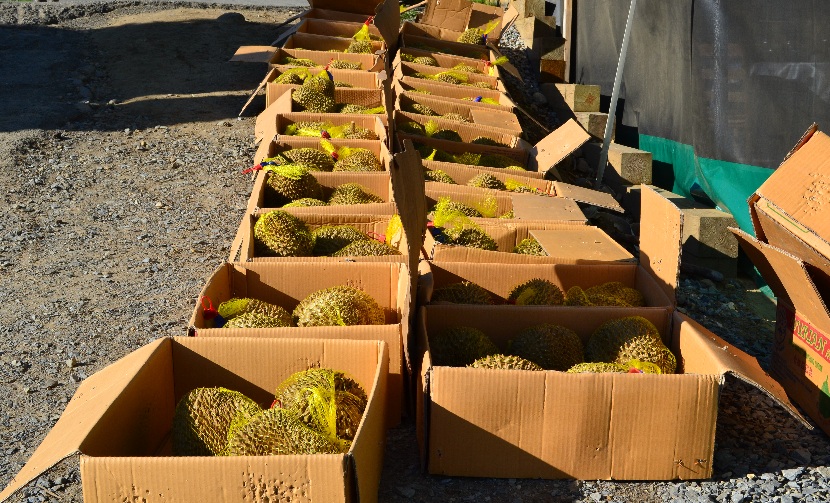
It is tricky to open this fruit and before I opened my first durian years ago, I had to educate myself well on how to do so to avoid hurting myself with the spines on the skin. Here is a photo of durian pulp on the inside of the spiny husk:

Here is a photo of durian pulp removed from the husk:
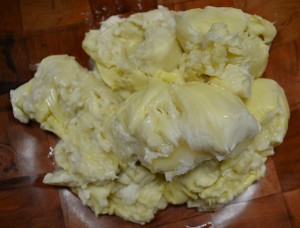
Here is a nutrient analysis of two cups of durian pulp:
| Nutrient | Durian, two cups of edible pulp, seeds & husk removed (486 g) | Adult Daily Values |
| Calories | 714.4 | |
| Protein | 7.14 g | |
| Fat | 25.9 g | |
| Carbohydrate | 131.7 g | |
| Beta-carotene | 111.8 mcg | |
| Thiamin (Vitamin B1) | 1.82 | 1.1 – 1.2 mg |
| Riboflavin (Vitamin B2) | 0.97 | 1.1 – 1.3 mg |
| Niacin (Vitamin B3) | 5.22 | 14 – 16 mg |
| Calcium | 29.2 | 1000 – 1200 mg |
| Iron | 2.09 | 8 – 18 mg |
| Magnesium | 145.8 | 310 – 420 mg |
| Potassium | 2119.0 | 4700 mg |
| Zinc | 1.36 | 8 – 11 mg |
For the calories consumed, durian is not as nutrient dense as some of the other foods that we have profiled on this blog, such as certain leafy greens. Also note the fat content of durian, it has more fat per calorie than other fruits, with a notable exception: avocado. I have yet to find a source for the omega 3 and 6 content of durian.
One of the best ways to keep in touch with us is to join our email list. You’ll receive a free copy of Our Top 12 Strategies for Long Term Success on A Raw Plant-Based Diet eBook along with regular information about raw food and plant-based diets and periodic promotions for our classes, events, and other offerings!

